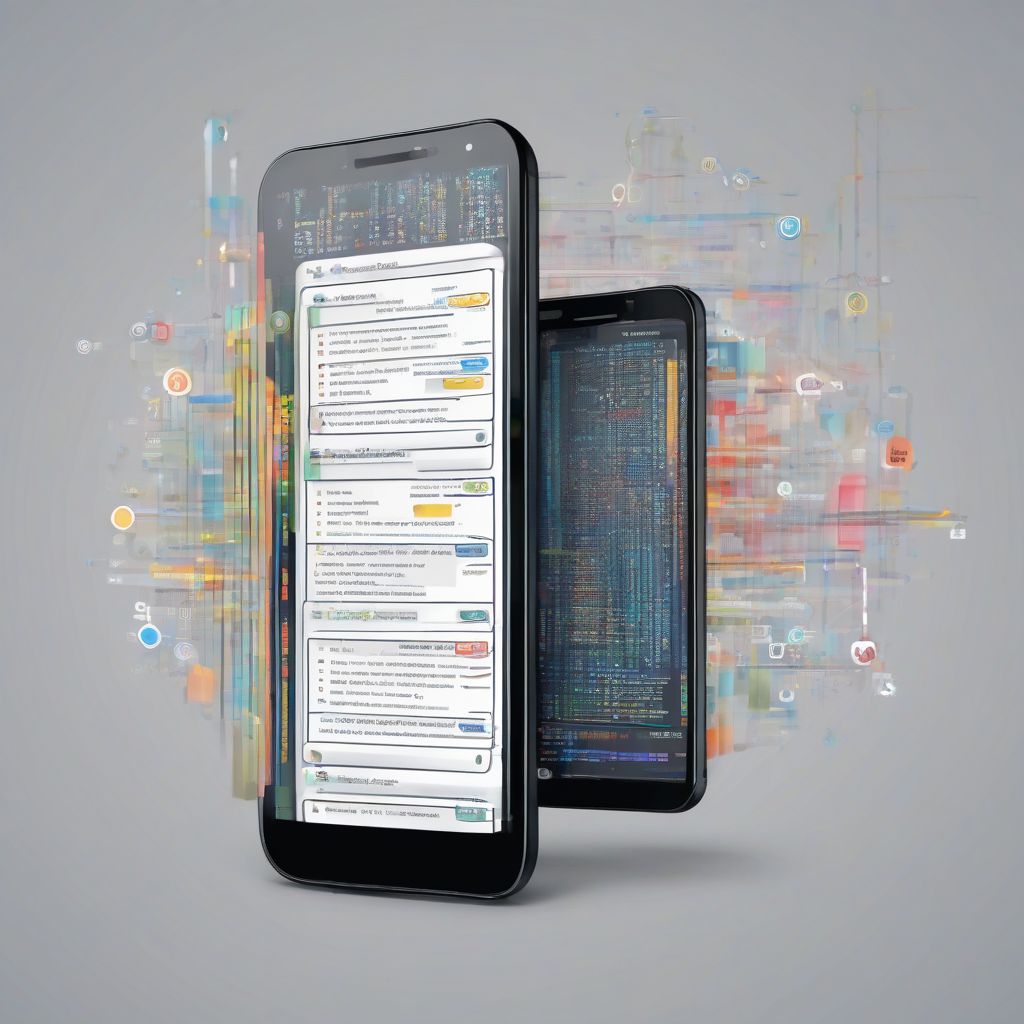Imagine this: you’re building a fantastic new fitness app, sleek and ready to help users conquer their health goals. You envision seamless payment gateways, real-time chat features, and maybe even weather updates for outdoor workout suggestions. But how do you bring all these features to life without reinventing the wheel?
The answer is APIs, or Application Programming Interfaces. Think of them as messengers that allow your app to communicate with other powerful software, unlocking a world of possibilities. But effective API integration is crucial for your app’s performance, security, and user experience.
This article dives deep into the world of APIs, exploring the best practices for seamless integration and how to leverage them to create a truly remarkable mobile app experience.
Understanding the Power of APIs
Before diving into the how-to, let’s clarify what APIs are and why they’re essential for mobile app development.
In simple terms, an API acts as a bridge between your app and other software applications. It defines a set of rules and specifications that allow different systems to communicate and exchange data securely and efficiently.
Think of ordering food online. You interact with the restaurant’s app or website, browsing the menu, placing your order, and even tracking its delivery. But behind the scenes, this seemingly simple process involves multiple APIs working harmoniously.
The app might use a payment gateway API to process transactions, a mapping API to display nearby restaurants and track deliveries, and even a communication API to connect you with the restaurant or delivery driver.
Benefits of Effective API Integration for Mobile Apps
Integrating APIs strategically offers a plethora of benefits for your mobile app:
1. Enhanced Functionality and Features:
APIs give your app access to pre-built features and functionalities, saving you development time and resources. Instead of building everything from scratch, you can leverage existing solutions to streamline your development process.
2. Improved User Experience:
Seamless integration leads to a smoother and more enjoyable user experience. APIs enable features like social media logins, location-based services, and personalized content, making your app more engaging and user-friendly.
3. Increased Scalability:
APIs make it easier to scale your app as your user base grows. By offloading specific tasks to dedicated APIs, you can handle increased traffic and data processing without compromising performance.
4. Cost-Effectiveness:
Utilizing APIs can be significantly more cost-effective than building and maintaining every feature in-house. Many API providers offer flexible pricing models, allowing you to pay only for the resources you use.
Best Practices for Effective API Integration
Now that we’ve covered the “why,” let’s explore the “how.” Integrating APIs effectively requires careful planning and execution. Here are some best practices to ensure a smooth and successful integration:
1. Choose the Right APIs:
Start by thoroughly researching and selecting APIs that align with your app’s functionality, security requirements, and performance expectations. Consider factors like API documentation, community support, and pricing models.
2. API Key Management:
API keys act as unique identifiers that authenticate your app’s requests to the API provider. Securely store and manage your API keys to prevent unauthorized access and potential security breaches.
3. Efficient Error Handling:
Robust error handling is crucial for any API integration. Implement clear error messages and appropriate retry mechanisms to gracefully handle unexpected issues and ensure a seamless user experience.
4. Security Considerations:
Prioritize security at every step of the integration process. Use secure communication protocols like HTTPS, validate and sanitize all API inputs and outputs, and regularly update your APIs to patch vulnerabilities.
5. Thorough Testing:
Rigorous testing is essential throughout the development lifecycle. Test your API integration thoroughly to identify and resolve any bugs, performance bottlenecks, or security flaws.
 API Integration in Mobile App Development
API Integration in Mobile App Development
[amazon bestseller=”api development”]
Common Challenges and Solutions in API Integration
While API integration offers immense potential, it’s not without its challenges. Here are some common hurdles developers face and how to overcome them:
1. API Documentation and Understanding:
Comprehensive API documentation is crucial for developers. Look for well-structured documentation with clear explanations, code samples, and examples to facilitate a smooth integration process.
2. Versioning and Compatibility Issues:
APIs evolve, and updates might introduce breaking changes. Stay informed about API versioning policies and implement strategies to handle backward compatibility gracefully.
3. Rate Limiting and Performance Bottlenecks:
Most APIs have rate limits to prevent abuse and ensure fair usage. Design your app to handle rate limiting gracefully, and optimize API calls to avoid performance bottlenecks.
4. Security Vulnerabilities:
Security should be a top priority throughout the integration process. Follow security best practices, validate data, and stay updated on potential vulnerabilities and mitigation strategies.
Conclusion:
In the dynamic world of mobile app development, APIs are no longer a luxury but a necessity. They empower you to build feature-rich, scalable, and secure apps that offer seamless user experiences. By understanding the best practices for API integration and proactively addressing potential challenges, you can unlock a world of possibilities for your mobile app and deliver exceptional value to your users. Remember, effective API integration is a journey, not a destination. Embrace continuous learning, stay updated with the latest trends, and never stop exploring new ways to leverage the power of APIs in your mobile app development endeavors.
